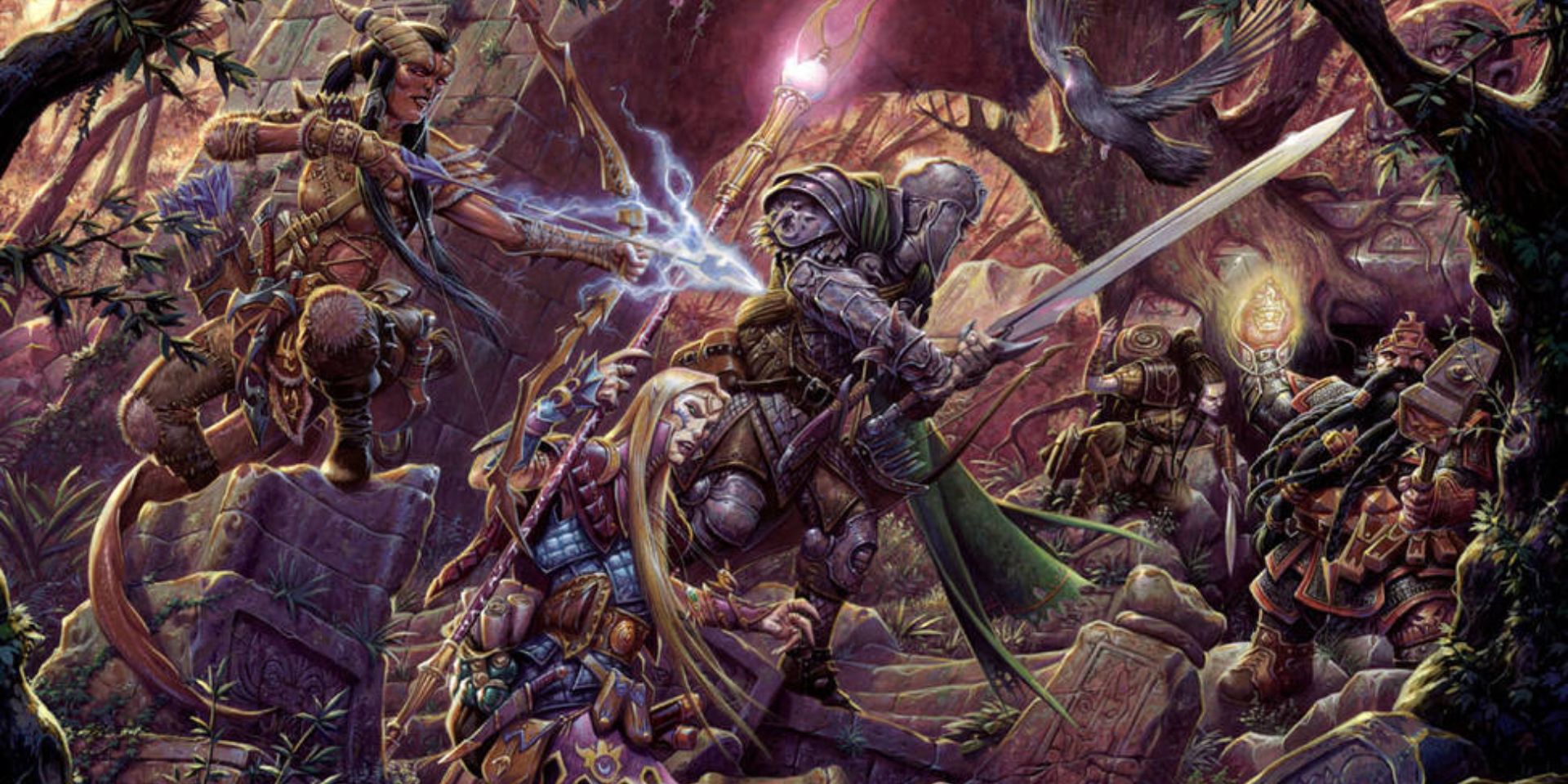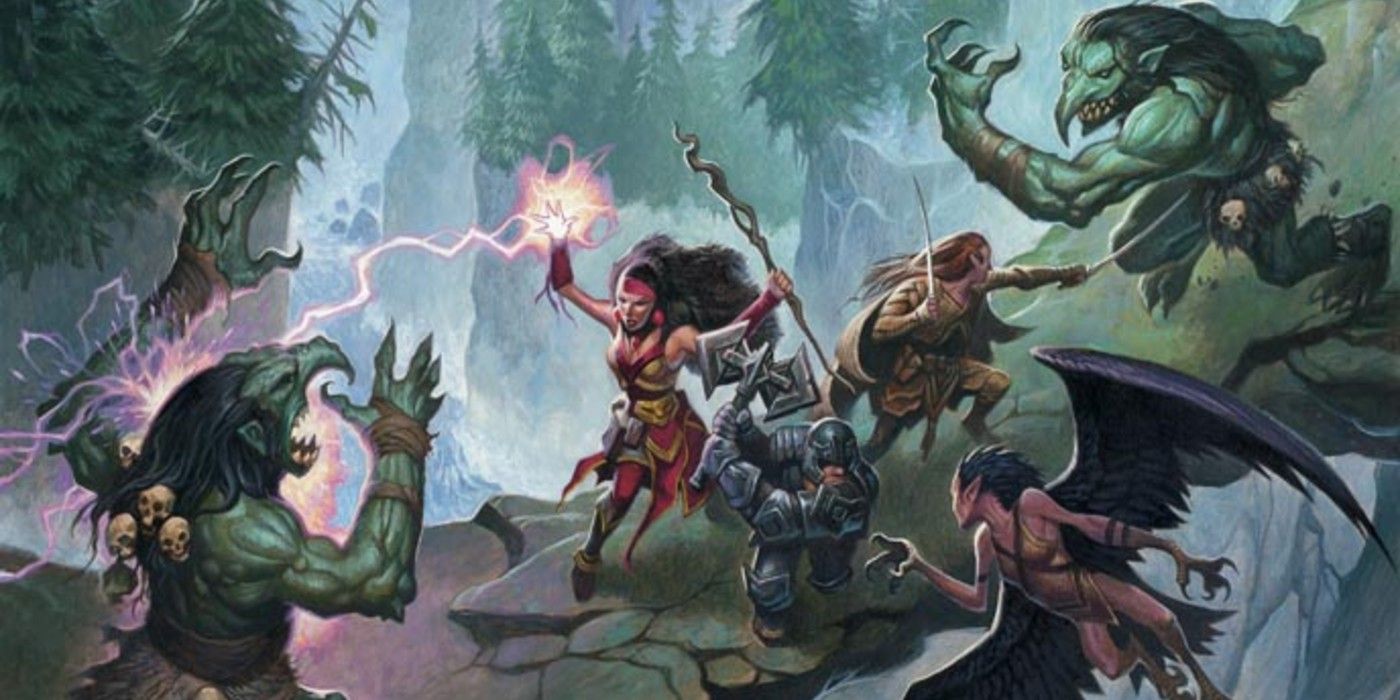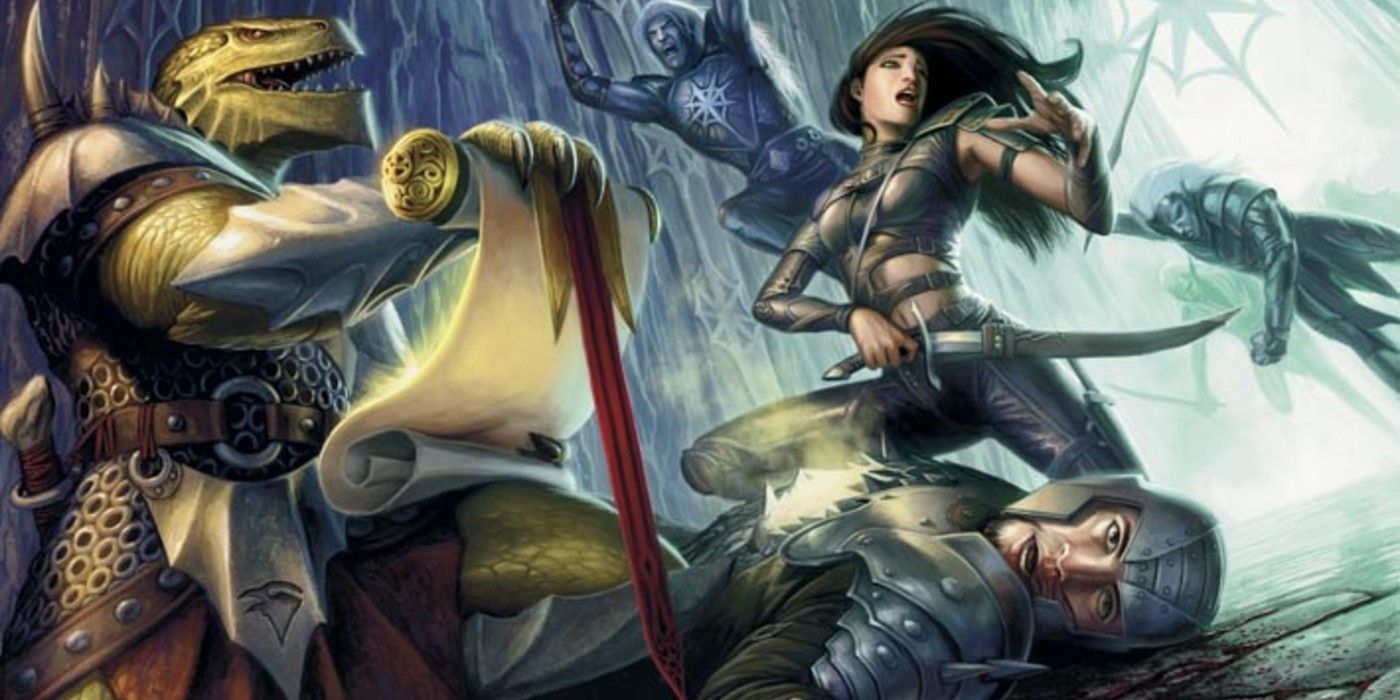Back in the mid-2000s, when Dungeons & Dragons 4th edition was the newest edition of the D&D RPG franchise, some veterans of D&D 1st, 2nd, and 3rd edition criticized its game mechanics for focusing on tactical combat at the expense of roleplaying and player creativity. Years after the release of Dungeons & Dragons 5th edition, many tabletop gamers came to view D&D 4e in a more favorable light, praising its well-balanced character classes, innovative base mechanics, and colorful "Nentir Vale" setting. What led to this massive variance in role-player opinion, and what lessons can be taken from the experiment that was D&D 4e?
The earliest iteration of the Dungeons & Dragons ruleset was a medieval miniatures war-game called Chainmail released by Gary Gygax in 1971: in a time where most miniature war-games recreated battles from the American Civil War, Napoleonic Wars, and World War II, Chainmail had rules for combat between armored knights, foot soldiers, and archers, with a special set of rules for war-gamers who wanted to introduce wizards, elves, dragons, and other western fantasy tropes to their game. The original Dungeons & Dragons roleplaying game came into being when game designer Dave Arneson hit upon using Gary Gygax's war-gaming rules to simulate cooperative dungeon-crawling adventures where player controlled individual heroes instead of armies. The rest, as they say, is history.
Dungeons & Dragons 4th Edition, released in 2007, arguably took the rules of old-school miniature war-gaming and blended them with the mechanics of computer RPGs and MMOs. The rigid, fixed nature of these rules (and the absence of races like Gnomes or settings like Ravenloft) led to many veteran D&D players feeling restricted in terms of the stories they could tell, pushed towards narratives of battle and conflict over diplomacy, puzzle-solving, or clever schemes (causing many D&D alumni to switch over to systems like Pathfinder for a time). The common refrain among many of these players was that:
Dungeons & Dragons 4th Edition Didn't Feel Like A D&D Game
The majority of character race/class abilities in Dungeons & Dragons 4th Edition were focused towards utility in combat (attacking, defending, healing, de-buffing) or affecting movement across a square/hex grid (teleportation, increasing movement speed, locking down enemies). Role-playing outside of combat in D&D 4e was generally a exercise in free-form narration, with much less mechanic weight given to actions like haggling with a merchant, levitating treasure out of a dungeon, or building a stronghold through money or magic.
Players could also try to use their combat abilities creatively to influence non-combat situations, but such attempts relied heavily on Dungeon Master fiat to be effective. The massive library of "At-Will," "Per-Encounter," and "Daily" Powers players could pick through for their character classes also made character creation for D&D 4e a very fiddly process, particularly without the digital resources many tabletop RPG companies offer players these days.
The Odd Paradigm Of D&D 4th Edition Gave Birth to New Ideas
Even though Dungeons & Dragons 4th Edition had its fair share of flaws, it also had many cool ideas and clever innovations that fixed issues from previous editions and inspired concepts in future games like Dungeons & Dragons 5th Edition. By giving character classes like Fighters and Rogues the same number of "At-Will," "Pr-Encounter," and "Daily" Powers as Wizards and Clerics, Wizards Of The Coast was able to create solid game balance and mechanical parity between melee and magical characters.
D&D 4e also popularized cool new character classes such as the "Warlord," a fighter who gave players tactical commands, and the "Warlock," a spell-caster who gained power through pacts with otherworldly beings. Finally, the "Nentir Vale" default setting of D&D 4e is a well-designed campaign world where scattered pockets of civilization struggle to thrive in a world of wilderness and peril – in other words, the perfect place for wandering heroes-for-hire to ply their trade.
The "Old School Revival" movement of RPG design hearkens back to the rules of the Basic D&D boxed sets that introduced many players to roleplaying back in the 1970s/1980s. In a similar way, modern RPGs such as 13th Age and Lancer take heavy inspiration from Dungeons & Dragons 4th Edition, borrowing the system's basic ability rules and character class concepts while reducing complexity and adding the narrative support D&D 4e lacked.



